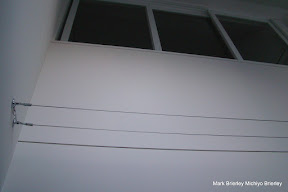December and January could be the hottest months in the house. At least, somewhat counterintuitively, they are the months with the highest solar gain. It's not that the sun is hotter in December and January. In fact, the sun is more or less the same temperature all the time, and cares little whether it is winter or summer in the northern hemisphere on Earth, but of course there is a difference in how much of that heat reaches the surface of our planet.
In terms of the radiation from the sun, there is more in the summer than in the winter. There are two reasons for this. First, the days are longer, so there are more hours of sunlight. More hours of sunlight mean more heat. Second, the angle of the sun is higher. This has two benefits. First, more sunlight is going to hit a given area of the earth. If the sun is directly above, a square metre of sunlight is going to hit a square metre of the earth. If the sun is 60 degrees below vertical, 30 degrees above the horizon, a square metre of sunlight will be elongated over two square metres of the earth so the incident radiation is halved. Also, the higher the sun is, the less atmosphere it has to get through, so the rays are stronger when they reach the ground.
The point with a house is that the windows are on the walls, so we aren't really interested in how much sunlight reaches a square metre of the ground. We want to know how much reaches a square metre of window. And this, almost by some divine intervention, means that in the winter, when we may expect it to be coldest outside, we get the most heat coming in through the windows. And when it gets warmer in the summer, less heat comes in. If we are careful with balconies and eaves, then we can try to keep this radiation to a minimum. Reflection is another thing that may lead one to believe that God invented windows, or at least that God was a double glazing salesman. The smaller the angle between solar rays and glass, the more is reflected and the less heat comes in. This means that more of the low winter sun will get through, and more of the high summer sun will be reflected.
So this is why it got up to 28 degrees centigrade in the living room at lunch time on 12th January, even though it was only one degree above freezing outside. The bottom line on this graph of temperatures over the first few weeks of our residence shows outside temperature (green - averaging more than one degree below zero). The highest temperature is inside temperature south (red at the top), and inside temperature upstairs north is pinkish below that, but dancing to the same tune. The others are slab temperatures. The big leap in inside ambient temperature was when we closed the windows and switched on the ventilation system on 23rd December, but you can see the jump in the temperature at the middle of the floor (light blue) as the underfloor heating started working on 26th December three days later. The effect at the bottom of the foundation slab (middle - dark blue) is slower, with about a three-day delay. At the North West corner of the foundation, the temperature change is much slower.
Obviously it would be churlish to complain about the house being too hot, when all around are pouring gallons of oil into theirs and still freezing, and of course there are a few things that we can do before resorting to opening windows and letting the heat out. According to the thermometer in the upstairs north room, it is significantly cooler there, so if we open the inside windows from the atrium into the bedroom, the heat should go in there. Also we can open the door into the genkan and washitsu, which are to the north and significantly cooler.
Part of the reason the north side is cooler is that the slab is much cooler there. This is by design. Kind of. The underfloor heating passes from the boiler to the south side of the floor, then to the north side of the floor, then back to the boiler, so the south side is being heated more effectively. Eventually the slab will probably have a constant temperature, but it actually seems like a good idea to have some temperature difference in the house. It would be nice to be able to control it a bit better, and I'm sure there is something we could do with the ventilation system. At the moment we are using a fan to blow air from the cooler northern parts of the house.
But, going back to emissivity, I can't help feeling that it may have been a good idea to have had a higher emissivity for the floor and the walls so that they would have been absorbing more heat. What I guess is happening is that the radiation is just bouncing around the floor and the walls and getting the air really hot. The white terrace outside is probably helping by reflecting more sun into the house.
